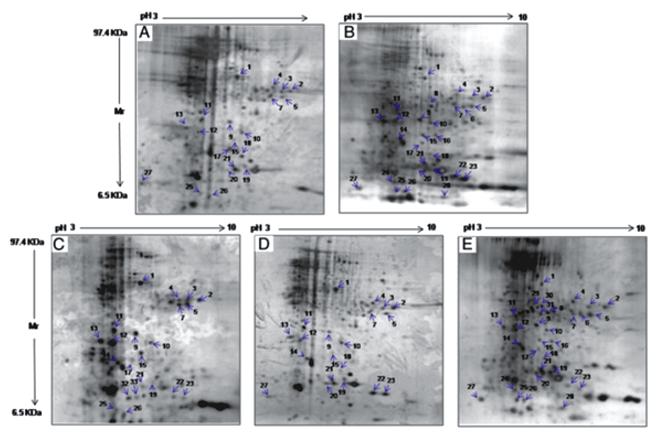15. Neoplastic transformation in mouse skin following exposure to cypermethrin: a pro-teomic analysis. |
In this study, the authors showed the effect of cypermethrin (a synthetic pyrethroid insecticide) on protein expression involved in neoplastic transform-ation in mouse skin. Comparative protein expression profiles between untreated control and cypermethrin-treated mouse skin were explored using 2-DE. A total of 27 spots that were statistically significant (p<0.05) and differentially expressed in response to cyper-methrin exposure were identified by MALDI-TOF/TOF and LC-MS/MS. Among them, six up-regulated proteins (carbonic anhydrase 3 (Ca 3), Hsp-27, S100A6, galectin-7, S100A9, S100A11) and one down-regulated protein (superoxide dismutase [Cu-Zn] (Sod 1)) are associated with cancer-related key processes. These selected dysregulated proteins were further validated in 2-DE gels of mouse skin treated with known tumorigens (benzo-[a]-pyrene, 12-O-tetradecanoyl-phorbol-13-acetate and mezerein). Comparative studies showed that Ca 3, S100A6, S100A9, S100A11 and Sod 1 are specific for stages of development and progression of tumors whereas Hsp-27 and galectin-7 are specific for tumor promotion stage by cypermethrin in mouse skin. Furthermore, these chosen proteins confirmed by Western blotting and immunofluorescence staining were consistent with changes in 2-DE check.
George et al.; Proteomics; 2011; 11; 4411-4421.
 Cypermethrin exposure leads to regulation of proteins expression involved in neoplastic transformation in mouse skin. |